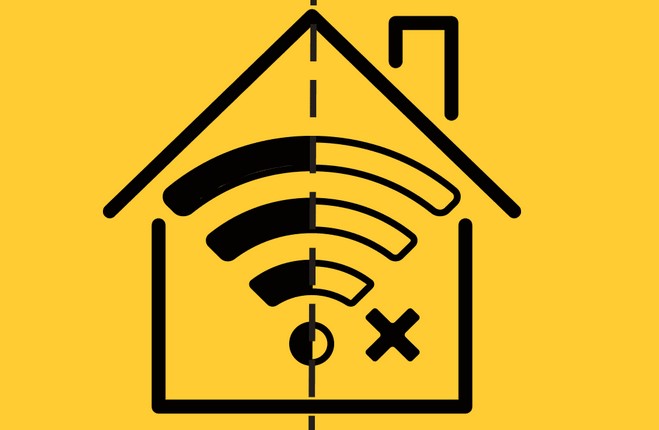The U.S. Department of Education recently published its 2024 National Educational Technology Plan, A Call to Action for Closing the Digital Access, Design and Use Divides.. The plan, which was first released in 1994 and most recently updated in 2016, frames the three divides the Education Department considers to be most hindering the “transformational potential” of edtech in supporting teaching and learning: the digital use, digital design and digital access divides.
Recommendations on ways local educational agencies can attempt to address each issue, as well as examples of successful initiatives that have taken place in California districts, including Escondido Union School District, East Side Union High School District, Cajon Valley Union School District and Lindsay Unified School District, are detailed.
Leaders from Cajon Valley Union SD, Los Angeles USD and University of California, Irvine, were part of the technical working group that provided feedback and examples that aided in the development of the document.
Digital use divide
Solutions to this divide involve creating opportunities for students to use technology to enhance learning, including through the application of technology to explore, create and engage in critical analysis of academic content and knowledge, according to the plan.
District-level recommendations to close the divide include:
- Developing a “Profile of a Learner/Graduate,” which outlines cognitive, personal and interpersonal competencies students should have when transitioning between grade levels and graduation.
- Designing and sustaining systems, including needs assessments, technology plans and evaluation processes, to support the development of competencies outlined in the Profile of a Learner/Graduate through the active use of technology to support learning.
- Implementing feedback mechanisms that empower students to become co-designers of learning experiences.
- Developing rubrics for digital resource and technology adoptions to ensure tools are accessible and integrated into the larger educational ecosystem, support Universal Design for Learning (UDL) principles and that can be customized in response to accommodation or modification needs of learners with disabilities.
- Reviewing subject area curricula or program scopes and sequences to ensure that student learning experiences build age-appropriate digital literacy skills through active technology use for learning.
- Building public-private partnerships with local businesses, higher education institutions and nonprofit organizations to help students access edtech-enabled hands-on learning and work-based learning experiences.
- Providing professional learning and technical assistance to district leaders, building-level administrators and educators to support the use of evidence to inform edtech use.
- Developing guidelines for emerging technologies that protect student data privacy and ensure alignment with shared educational vision and learning principles.
Digital design divide
Addressing the digital design divide means providing educators opportunities to expand their professional knowledge and build the skills needed to design technology-enabled learning experiences.
District-level recommendations to close the divide include:
- Developing a “Portrait of an Educator” that outlines the cognitive, personal and interpersonal competencies educators should have to design learning experiences that help students develop the skills and attributes outlined in the profile of a graduate.
- Designing and sustaining systems that support ongoing learning for new and veteran teachers and administrators, providing them with the time and space needed to design learning opportunities aligned with the UDL framework.
- Implementing feedback mechanisms that empower educators to become leaders and co-designers of professional learning experiences.
- Providing educators and administrators with professional learning that supports the development of digital literacy skills so that they can model these skills for students and the broader school community.
- Developing processes for evaluating the potential effectiveness of digital tools before purchase, including the use of research and evidence.
- Fostering an inclusive technology ecosystem that solicits input from diverse stakeholders to collaborate on decision making for technology purchases, learning space design and curriculum planning.
- Supporting and facilitating a systemic culture that builds trust and empowers educators to enhance and grow their professional practice to meet the needs of each student.
- Regularly soliciting educator feedback and evaluating professional learning efforts to ensure alignment with the Portrait of an Educator.
Digital access divide
To close the access divide, students and educators alike must have greater access to connectivity and equitable access to edtech such as devices and digital content. Accessibility and digital health, safety and citizenship are also key elements to closing this divide.
District-level recommendations to close this divide include:
- Developing a “Portrait of a Learning Environment” to set expectations around habits and abilities.
- Establishing and maintaining a cabinet-level edtech director to ensure the wise and effective spending of edtech funds.
- Conducting regular needs assessments to ensure technology properly supports learning.
- Developing model processes and guidelines for device refresh policies based on local funding structures.
- Leveraging state purchasing power or regional buying consortia when purchasing edtech hardware, software and services.
- Developing learning technology plans in consultation with a broad group of stakeholders and according to established review cycles.
- Leveraging public-private partnerships and community collaboration to bring broadband internet access to previously under connected areas and ensure student access to learning anytime, anywhere.
- Developing processes and structures that ensure the inclusion of accessibility as a component of procurement processes.
- Planning for and incorporating skills and expectations across all grade levels and subject areas for digital health, safety, citizenship and media literacy.





